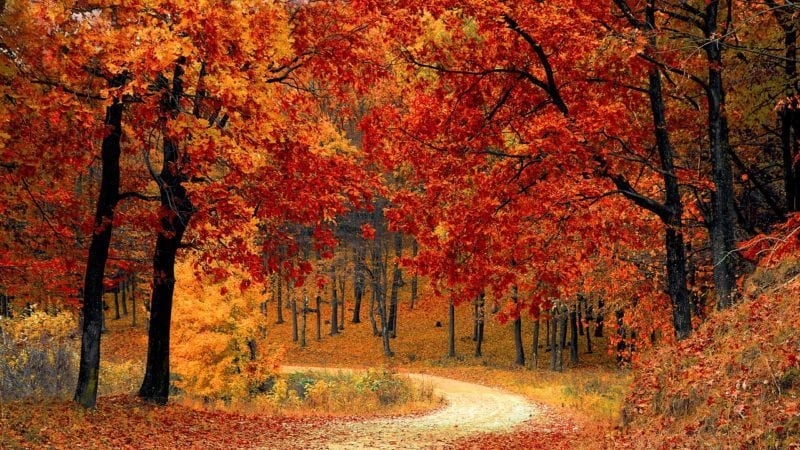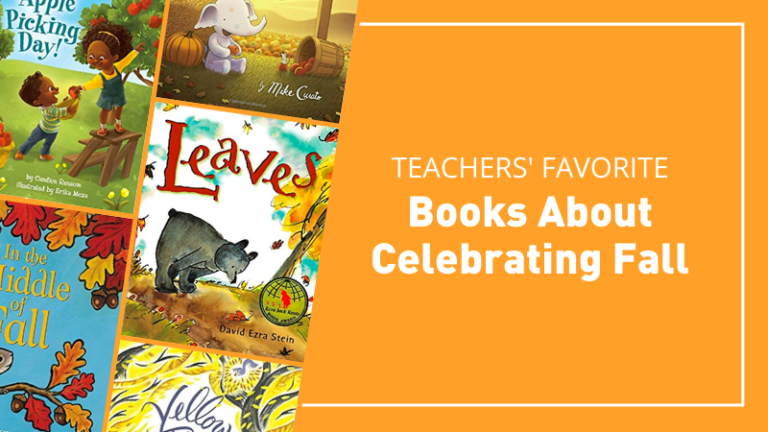Celebrate the beauty of the changing seasons with three stories written by Caldecott Award–winning author Lois Ehlert. While the stories are simple—suitable for children in preschool through early elementary—the artwork is dazzling.
These stories are perfect model texts for reading and writing lessons for older students. The elaborate and imaginative use of natural objects at the center of each story will inspire nature walks, art projects and curiosity about the changing seasons. After the visual feast of these stories, young nature lovers are sure to see with fresh eyes as they take a nature walk through the woods and create stories of their own.
1. Boo to You!
Story line: The mice are having a harvest party and guess who’s not invited? The creepy meat-loving cat that makes them edgy! Watch the mice scramble to create a creature that will make the scary cat scat.
Artwork elements to observe: Ehlert’s signature collage artwork evokes the textures, shapes, and colors of autumn. The beautiful marbled papers are a whirlwind of activity. Look closely at the illustrations—the story is a cornucopia of natural materials including ornamental gourds, cranberries, carrots, Indian corn, corn husks, honey locust seed pod, acorn, pumpkin and squash seeds, and pinecones.
2. Leaf Man
Story line: With a body made of colorful leaves and acorns for eyes, Leaf Man flutters in the breeze, meandering past animals, over fields of fall vegetables, above rivers and across meadows. Where is he off to? No one’s quite sure, but this much is certain: A Leaf Man’s got to go where the wind blows.
Artwork elements to observe: Blazing reds, glowing golds and smoldering oranges set the stage for this fanciful story. The creative overlapping of natural elements create flow and movement as the main character floats along. All of the whimsical characters in the story, including spotted cows, ducks, geese and fluttering butterflies, are delightfully fashioned out of life-size leaves of various shapes, sizes and hues.
3. Red Leaf, Yellow Leaf
Story line: Examine the growth of a sugar maple tree through the eyes of a young child, from a tiny seed in a maple key to a young seedling to a leafy haven for birds to a glorious display of autumnal reds and yellows. Described as a “visual bounty,” this story introduces readers to the life cycle of a tree and includes a reference section in the back that introduces the parts of a tree, how to plant a tree and how to make a bird treat.
Artwork elements to observe: Again, Ehlert’s vivid collage artwork takes center stage in this story. Beautifully marbled papers overlap to create colors and textures that bring the characters to life. Take note of the brilliant birds perched on branches, the squirrel lounging in a pile of richly textured brown leaves. Seeds, roots, twigs, fabric and wire are a few of the natural elements creatively incorporated throughout the story.
Now, It’s Time for a Nature Walk!
Now that your students have been exposed to Ehlert’s inspiring foliage artwork, it’s time for them to do a little creating themselves!
-
As you read one (or all) of these stories, record the students’ observations on large chart paper about what they see and how Ehlert uses natural elements to move her stories along. Talk about how her words and artwork complement each other.
-
Before heading outside, set expectations for the gathering of materials. Remind students that their eyes will be their primary tool for this hunt and that quiet concentration will be required for everyone to find the best materials. Now bundle up and head outside! Give each student a bag to collect their treasures in. This will help clarify size parameters.
-
Optional step: Have students prepare a 8½ x 11 piece of watercolor-marbled paper ahead of time to serve as background material. Plain 8½ x 11 construction paper will also work.
-
Back in the classroom, give the students some time to arrange their finds on their paper. Tell them to try a few different combinations before they make a final decision. Let the elements lead them. As they try different arrangements, ask them to picture a story in their head that would complement their artwork.
-
Have students share their arrangement and story line with a partner or their table group. Some students will know exactly where they want to go and some will appreciate brainstorming and feedback from their classmates.
-
Using liquid glue, have students tack down their natural elements. Have a mixture of glue and water (or Modge Podge) available to brush gently over the top. It’s OK if it’s a bit goopy. It will dry overnight.
-
On separate lined paper, have them start a rough draft of their story. Go through your normal editing and revising process.
-
Students can copy the final draft of their story onto nice-quality paper. Mount their story and artwork side by side onto a large piece of colored construction paper.
-
Have your author/illustrators sign their pieces and hang them prominently for them to admire!
What are your favorite activities for fall? Tell us in the comments!

